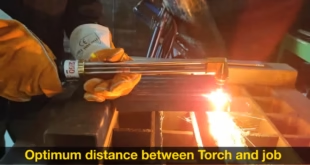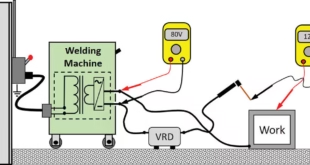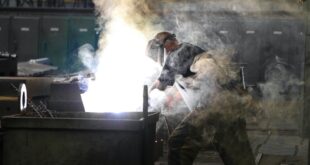The Ultimate Guide to Welding Goggles
Introduction
Welding is a crucial process that requires the use of proper protective equipment, especially when it comes to eye protection. Welding goggles are essential for shielding the eyes from the bright light, heat, and sparks that are produced during welding. In this ultimate guide, we will dive into the various types of welding goggles, their features, and the factors you need to consider before making a purchase. Whether you’re a seasoned welder or just starting out, this guide will provide you with the information you need to select the right welding goggles for your needs. From safety features to comfort and lens options, you’ll find everything you need to know about welding goggles in one comprehensive guide.
Definition of Welding Goggles
Welding goggles are protective eyewear that shield the eyes from harmful rays emitted during the welding process. They are designed to be worn by welders to prevent damage to their eyes from ultraviolet (UV) and infrared (IR) light, sparks, and flying debris.
Importance of Welding Goggles
The importance of welding goggles cannot be overstated as welding is a hazardous activity that can cause serious injury to the eyes if proper precautions are not taken. Welding goggles protect the eyes from the intense light produced during welding which can cause serious damage to the eyes, including cataracts, corneal burns, and even blindness. In addition, welding goggles also protect the eyes from flying debris that can be generated during the welding process. These particles can cause cuts, abrasions, or penetration injuries to the eyes, which can be very painful and potentially cause permanent damage. Furthermore, welding goggles also provide protection against the harmful effects of the UV and IR light emitted during welding. This light can cause damage to the eyes and skin, including sunburn and other long-term effects.

Types of Welding Goggles
Welding goggles come in a variety of styles, each with its own unique features to meet the needs of different welding applications. When choosing a pair of welding goggles, it is important to consider the type of welding you will be doing, your personal preferences, and any specific vision needs you may have. The ultimate goal is to choose a pair of welding goggles that provide maximum protection and comfort while you work. Here are the most common types of welding goggles:
Flip-Up Welding Goggles
These goggles feature flip-up lenses that can be easily lifted up or down, making it easy for the welder to switch from welding to grinding or other tasks.
Passive Welding Goggles
Passive welding goggles use shade lenses to protect the welder’s eyes from the bright light and UV radiation generated by welding. They come in a range of shade levels, with higher numbers providing greater protection.
Auto-Darkening Welding Goggles
Auto-darkening welding goggles are equipped with electronic sensors that automatically adjust the shade of the lens based on the intensity of the welding arc. This type of goggles provides the welder with continuous protection and eliminates the need to switch between different shade levels.
Prescription Welding Goggles
These goggles are designed to accommodate prescription glasses, making it possible for those who need corrective lenses to wear them while welding.
Face Shields
Face shields are worn over the face and head to protect the welder from sparks and splatter. They come in a variety of styles, including passive and auto-darkening models, and can be used in conjunction with other types of protective gear.
Magnifying Welding Goggles
These goggles are equipped with magnifying lenses to provide the welder with a close-up view of their work. This is particularly useful for fine welding tasks or for those with vision impairments.
Factors to Consider When Choosing Welding Goggles
When choosing welding goggles, there are several important factors to consider to ensure that you get the best protection for your eyes. Some of these factors include:
- Lens Shade Welding goggles come with lenses of different shades, and the shade you choose will depend on the type of welding you are doing. The lens shade number indicates the amount of light that is blocked, with a higher number providing greater protection. Generally, a shade number of 10 is suitable for most welding applications, while a shade number of 14 is recommended for more intense welding.
- Comfort Welding goggles should fit comfortably on your face and not slip or move while you are welding. You may want to try on different models and find one that is comfortable to wear for extended periods.
- Durability Welding goggles should be made from durable materials that can withstand the harsh conditions of welding, such as high heat and flying debris.
- Protection Welding goggles should be certified to meet the appropriate safety standards for eye protection, such as ANSI Z87.1. Look for goggles that provide protection against both UV and IR radiation, as well as against flying debris.
- Ventilation Welding goggles should have adequate ventilation to prevent fogging and ensure that you can see clearly while welding.
- Cost Welding goggles come in a range of prices, and it is important to consider the cost when choosing a pair. While it may be tempting to choose the least expensive option, it is important to remember that your eyes are worth investing in, and that a higher-priced pair of goggles may provide better protection and comfort.
How to Use Welding Goggles Safely
Using welding goggles safely requires proper preparation, positioning, and maintenance. By following these guidelines, you can ensure that your eyes are protected while welding, and that you can enjoy a safe and successful welding experience.
Preparation Before Welding
- Choose the appropriate lens shade: Choose the right lens shade based on the type of welding you are doing. A lens shade of 10 is suitable for most welding applications, while a lens shade of 14 is recommended for more intense welding.
- Check the fit: Make sure the goggles fit comfortably and securely on your face. They should not slip or move while you are welding.
- Inspect the goggles: Before each use, inspect the goggles for any damage, such as cracks or missing parts, that could compromise their effectiveness. If the goggles are damaged, replace them.
Proper Positioning of Welding Goggles
- Put the goggles on before starting to weld: Do not wait until you start welding to put on your goggles. This will ensure that your eyes are protected from the start of the welding process.
- Position the goggles correctly: The goggles should fit snugly and comfortably on your face, covering your eyes completely. The lenses should be positioned close to your eyes to prevent any gaps that could allow light or debris to enter.
- Keep the goggles on: Keep the goggles on until you have finished welding and any potential hazards have been removed.
Maintenance and Care of Welding Goggles
- Clean the lenses regularly: Regular cleaning of the lenses will help maintain clear vision while welding. Use a soft cloth to clean the lenses, and avoid using solvents or abrasive materials that could scratch the lenses.
- Store the goggles properly: When not in use, store the goggles in a clean, dry place, away from any potential sources of damage. Do not expose the goggles to high temperatures or direct sunlight, which could cause the lenses to deteriorate.
- Replace the goggles if damaged: If the goggles become damaged or worn, replace them immediately. Do not continue to use damaged goggles, as they may not provide adequate protection.
FAQs
What happens if you weld without goggles?
Welding without goggles can result in severe damage to your eyes, including burns to the cornea, retinal damage, and cataracts. The intense light produced by welding can cause permanent vision loss, so it’s important to always wear proper eye protection.
How do I choose welding goggles?
When choosing welding goggles, you should consider the type of welding you will be doing, the intensity of the light produced, and the duration of the task. It’s important to select goggles that are specifically designed for the type of welding you’ll be doing, and that have a proper lens shade to protect your eyes from the intense light.
Which type of goggles is not best to use while welding?
Sunglasses or general-purpose safety glasses are not suitable for welding because they do not provide adequate protection from the intense light produced by welding.
Can you look at the sun with welding goggles?
No, you should not look at the sun with welding goggles or any other type of eye protection. The intense light produced by the sun can cause severe damage to your eyes, even with protective gear.
Can you weld without goggles?
No, it is not safe to weld without goggles. Welding produces intense light and heat that can cause serious damage to your eyes.
Do welding goggles protect from UV?
Yes, welding goggles protect from ultraviolet (UV) light, which is produced by many welding processes. This UV light can cause damage to the cornea, lens, and retina of the eye.
How much light do welding goggles block?
Welding goggles typically block at least 99% of the light produced by welding. The exact amount of light blocked depends on the lens shade and the type of welding being performed.
Do welding goggles protect from lasers?
Welding goggles may provide some protection against lasers, but they are not specifically designed to protect against lasers. If you are working with lasers, it’s important to use eye protection specifically designed for laser use.
Why do you need goggles to weld?
Welding goggles are necessary to protect your eyes from the intense light and heat produced by welding. The bright light and sparks produced during welding can cause permanent damage to your eyes, so it’s important to always wear proper eye protection.
Are leather gloves good for welding?
Yes, leather gloves are often used for welding due to their durability and heat resistance.
Why should you wear gloves when welding?
It’s important to wear gloves when welding to protect your hands from the heat, sparks, and molten metal that can occur during the welding process.
Why is leather used for welding?
Leather is used for welding gloves because it is a natural material that is able to withstand high temperatures and provide adequate protection for the welder’s hands. Cowhide is a common choice for welding gloves because it is a tough and durable leather that provides good heat resistance.
Conclusion
In conclusion, welding goggles are an essential piece of personal protective equipment for anyone who works in welding. They provide crucial protection for the eyes against the harmful rays, sparks, and flying debris that are generated during the welding process. When choosing welding goggles, it is important to consider factors such as lens shade, comfort, durability, protection, ventilation, and cost. It is also important to follow proper safety protocols, such as putting the goggles on before starting to weld and keeping them on until the welding is complete. Proper maintenance and care of welding goggles are also crucial to ensuring their effectiveness and longevity. Regular cleaning, proper storage, and replacement if damaged will help keep the goggles in good condition and ready for use. In conclusion, the ultimate guide to welding goggles highlights the importance of wearing the right protective eyewear during welding and provides the information you need to choose the right pair of goggles and use them safely. By following these guidelines, you can help ensure that your eyes are protected while welding and avoid the risk of serious injury.
 Welding of Welders All about Welding and Welders
Welding of Welders All about Welding and Welders



